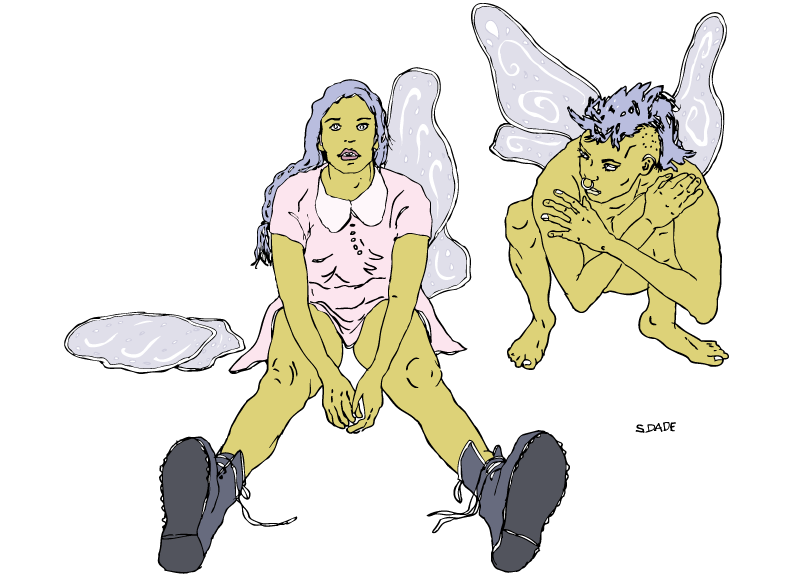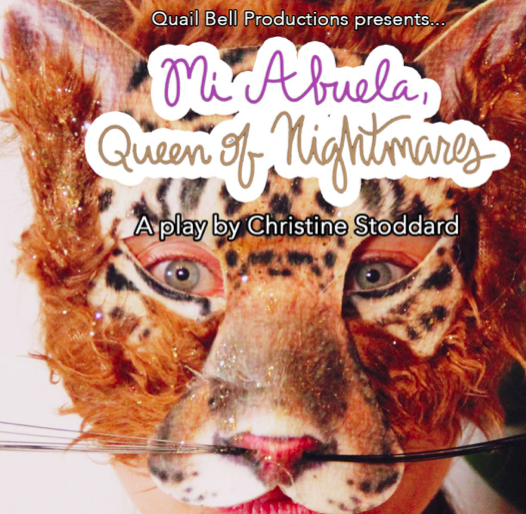|
The Breadcrumbs widget will appear here on the published site.
Fairies? Aliens? Who knows! It ain’t easy being green, especially when the strange villagers who find you find you next to a pit once used to trap animals. They look at your weird clothes (perhaps fashioned out of leaves and meadowgrass) and hear a foreign language completely different from their provincial English. Coupled with your green skin and general bewilderment, there's little chance that they would take you for a human creature. In the 12th century, the legendary Green Children of Woolpit found themselves in that same predicament when they were discovered on the outskirts of Woolpit in Suffolk, England. The folklore surrounding the Green Children of Woolpit began either during the reign of King Stephen or Henry II. The town's modern name derives from a linguistic corruption of the original name (“Wolfpittes”), stemming from the ancient pits that people used to capture wolves when they still inhabited England. The two unusual children (one girl and one boy) were disoriented and crying from starvation and confusion. Fortunately, Sir Richard de Caine of Wilkes gave them a home. Despite being famished, the children refused to eat anything the adults tried to feed them. As options dwindled, Sir Richard's servants presented the children with freshly-reaped beanstalks. The children instantly brightened and lived off of beans from thereon. The girl eventually welcomed the foreign foods the adults introduced into her diet and lost her green skin. But her brother couldn’t diversify his diet and retained his green complexion. He grew more melancholic and depressed with each passing day until he died. Yet his sister lived on to learn English and assumed the name “Agnes Barre." She also married a royal ambassador and lived with him in Norfolk. Rumor has it that their neighbors thought that Agnes Barre’s behavior was "wanton." When Agnes finally spoke English well enough to communicate her story, she said that she and her brother came from a place called “St. Martin” located underground. The skies of St. Martin remained twilitten so that the land was in perpetual shade. All of the land’s inhabitants shared the same green complexion that she had had as a child. Another beauteous land sat across from them, divided by an expansive river. While she and her brother were following their father’s herds, they allegedly stumbled across a cavern and heard the sound of enchanting bells emanating from inside of it. Enticed by the music, the siblings wandered into the cavern and then found themselves on Earth’s surface. Confused and physically overwhelmed by the scorching light from the same sun that kept St. Martin dim, the children panicked. Based on Agnes’s telling of the events, it's unsurprising that people thought that they were fairies. Her story parallels the fairy mythology and folklore prevalent at the time. Celtic folklore involved interesting beliefs about the boundaries between the physical world and the fairy realms, including the belief that fairies wouldn’t cross certain rivers, bodies of water, or natural boundaries. They also believed that fairies were particular when it came to offerings. Offerings were usually food or plants, but wildly varied based on the taste of the individual fairy. Celtic people far and wide considered sunrise and sunset to be times when the fairy world and human could overlap, making communication and travel more efficient, hence all of the supernatural mystery surrounding midnight. Celtic fairy mythology also holds that the revels of fairies are marked by intoxicating bells and otherworldly music, compelling humans to join them. Since the fairy realms aren't bound by time, people could be kidnapped for hundreds of years and, if and when they return, find that the world they once knew had aged hundreds of years while they were gone. Different folklore hints that these magical entities from neighboring dimensions could either be extraterrestrial visitors or ultraterrestrial beings from alternate realms of Earth capable of travelling between the worlds at specific times or whenever they please. Even the children's green skin was perfectly in line with how fairies could have humanoid shapes yet still look inhuman. The Green Man is another great example of this phenomenon, as is the motley assortment of ways that fairies varied in terms of their skin tone (believed to be green, brown, blue, gray, etc.), forms, and general relationship with humans. Today people surmise that the children suffered from the “green sickness” that plagued unmarried Victorian women. Such discoloration accompanies hypochromic anemia. This theory helps explain why the girl lived and the boy died. She eventually ate properly and he never did. Another popular and eerie modern explanation as to how the children's skin turned green holds that an abusive parent might have fed them arsenic and left them for dead in the woods located by the border of Norfolk and Suffolk. This practice was common among the parents who wanted to kill off their children for an inheritance, or because the children were unwanted in some other way. The children’s unknown language could have very well been an English dialect from a distant town that dissolved into further incoherency amidst the disorienting effects of arsenic poisoning. Arsenic poisoning also causes rashes, vomiting, and other outward signs of illness would have made superstitious medieval people unwilling to approach the children. The researcher Paul Harris investigated the Green Children of Woolpit story at length and ended up connecting a few dots. He speculates that the children might have been from Belgium and therefore speakers of Flemish. When Henry II came to power, he attacked the Flemish people crossing the northern Belgian border into England. In 1173, a violent conflict ensued at Fornham in Suffolk, killing thousands as a result. Not only did the battle take place within a few miles from Woolpit, but each respective location rested on opposite sides of the (rather small) River Lark. A place known today as Fornham All Saints was once called “Furnham St. Martin” and rests only two miles away from Bury St. Edmund. The St. Edmund church was famous for its elegant bells and could have been the source that led the children out of Grime’s Grave, a network of flint mines from Neolithic time that sat only 20 miles away from Bury St. Edmund. It’s highly plausible that the children attempted to seek refuge from the battle in the shadows of Grime’s Grave, deprived of light and proper nourishment. Fortunately, the children are enshrined as legends in lieu of whatever tragedy jostled them in the first place. And regardless of the real truth, we have a wonderful story at hand. #GreenChildren #Folklore #Mythology #England #MiddleAges #Colorism #Supernatural #Fairies #Paranormal Visit our shop and subscribe. Sponsor us. Submit and become a contributor. Like us on Facebook and follow us on Twitter. CommentsComments are closed.
|
|









